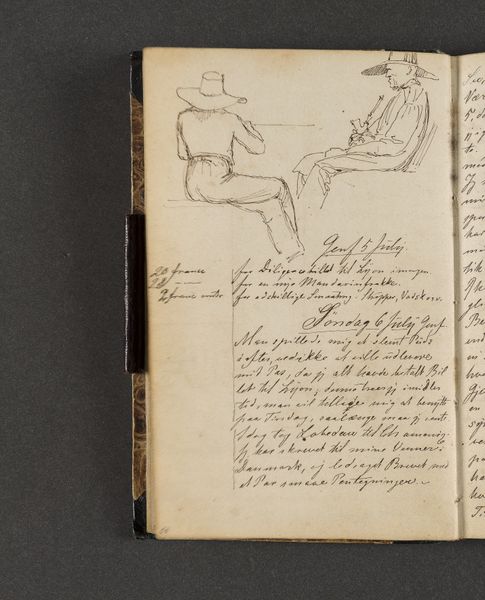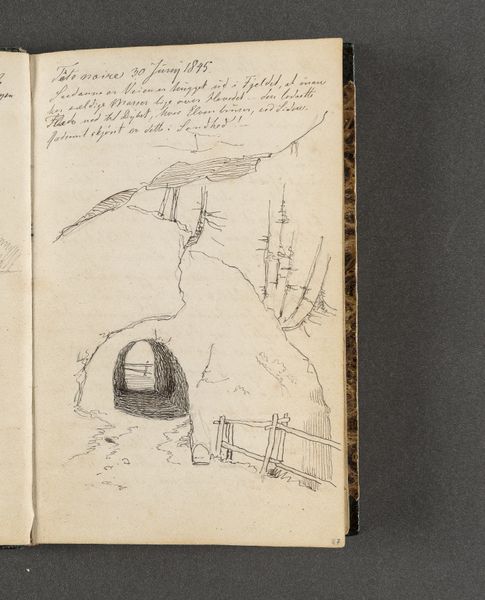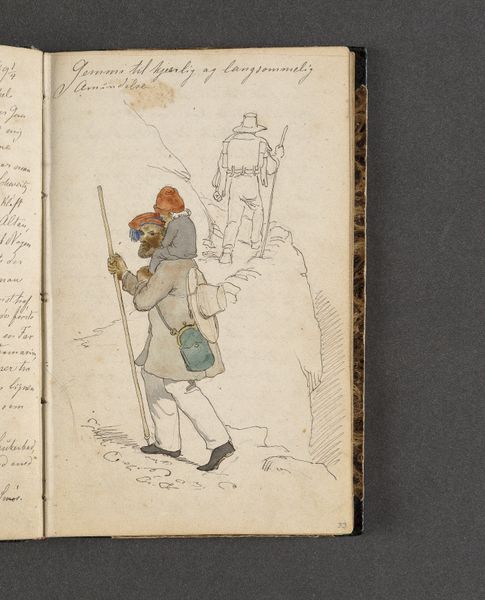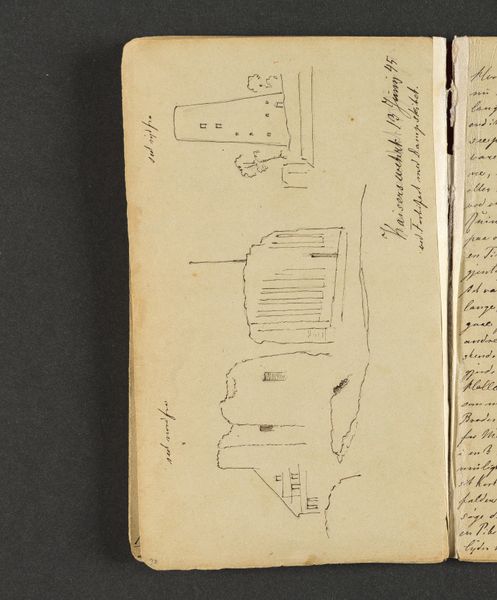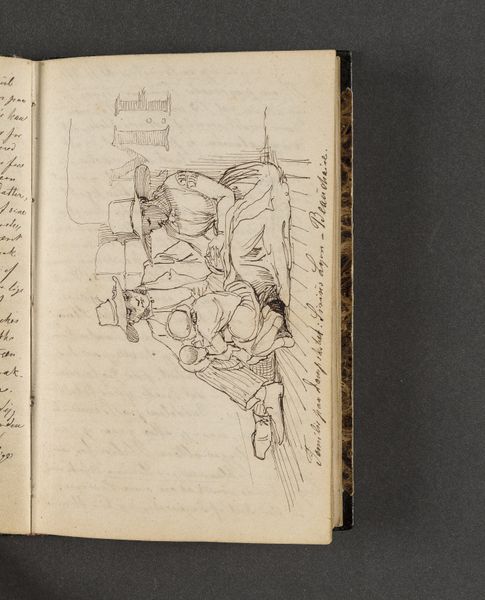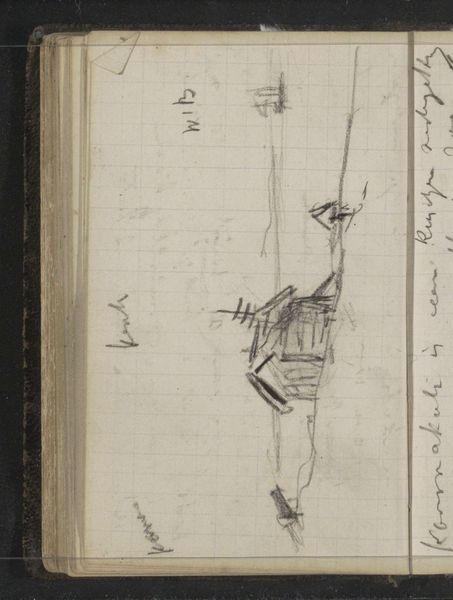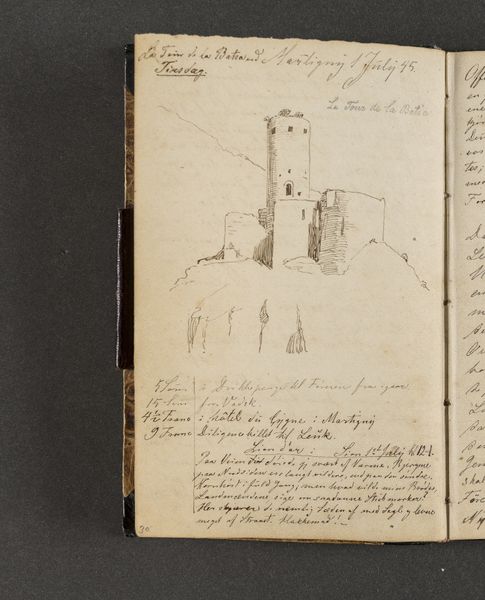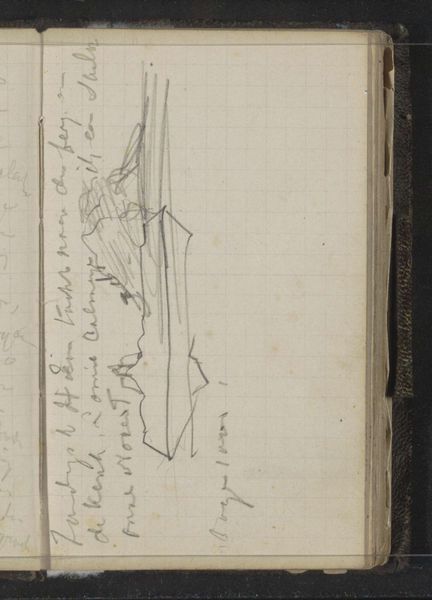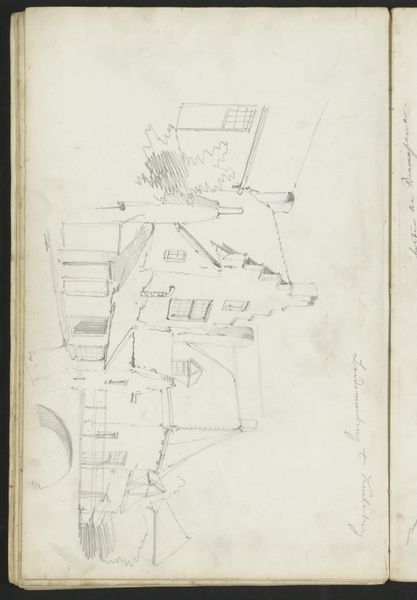
drawing, paper, pencil
#
drawing
#
narrative-art
#
landscape
#
paper
#
romanticism
#
pencil
Dimensions: 161 mm (height) x 103 mm (width) x 11 mm (depth) (monteringsmaal)
Editor: Here we have Johan Thomas Lundbye's pencil and paper drawing from 1845, "Et opsadlet æsel, der græsser," or "A Saddled Donkey Grazing." There’s a sort of quiet, observational feel to it, like a snapshot from a traveler's notebook. What's your take on this piece? Curator: Lundbye, a Romantic artist, uses landscape not just as scenery, but as a reflection of the social and political landscape of his time. Think about what it meant to depict rural life during a period of intense national romanticism in Denmark. Does the donkey here serve as an emblem of the common folk, tied to the land? Is it meant to provoke thinking about who had the freedom of movement in that moment? Editor: That's a perspective I hadn't considered. The donkey, rather than being simply part of the scenery, representing broader socio-political ideas about freedom, and the ties that bind one to their social position and physical space... Curator: Exactly. The meticulous rendering of the donkey, almost like a portrait, elevates it beyond mere livestock. In what ways does Lundbye elevate or subvert expectations associated with romanticism and landscape in art? Where does he invite social questions and reflections? Editor: Well, he includes these detailed notations on the left page, alongside the image itself. Curator: Notes from the artist add a whole additional layer. What does it do to you to consider those words *part* of the artwork? Editor: The artist's handwritten notations become like an extension of his thought process. He gives us another avenue to enter a dialogue with his experience. Curator: Absolutely! By merging observational drawing with textual reflection, Lundbye invites us to examine the social and existential meaning behind seemingly simple scenes. It’s in these subtle choices that art becomes a tool for broader cultural commentary. Editor: That really changes how I view not only this piece, but the potential for social commentary within landscape art of the period! Thanks so much.
Comments
No comments
Be the first to comment and join the conversation on the ultimate creative platform.
